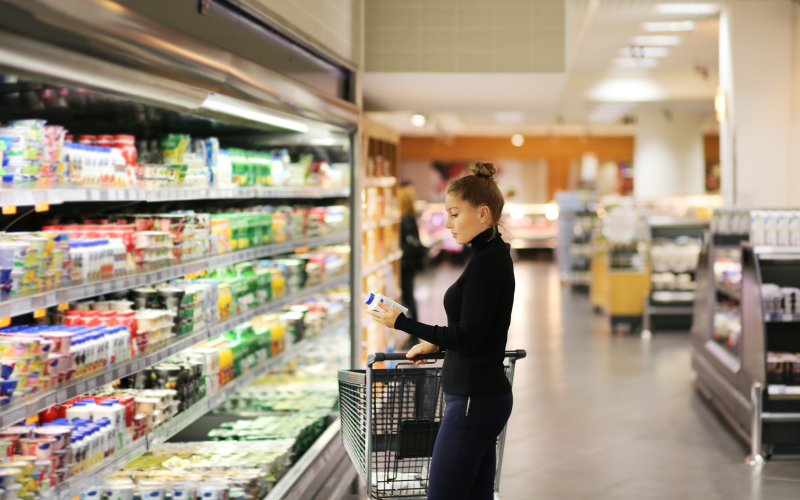Beyond the Aisles: A Roadmap for the “End-to-End” Era in Grocery Retail
As grocery retail value chains have innovated past new challenges, increased value chain integration asks a relevant and timely question: is it time for retail value chains to behave and operate as one single ecosystem?
Given the sheer logistics and pressures involved in balancing consumer expectations for speed and optionality with margin resilience and operational precision, an “ecosystem” approach seems fitting.
The perks? An integrated ecosystem approach is capable of repositioning what “value” can mean for both business and customers.
This article unravels a 10-phase roadmap, meticulously designed around four foundational pillars, steering grocery retail towards unparalleled optimization.
1. Precision Planning – Demand Forecasting and Real-Time Inventory
Efficiency often begins with meticulous planning. Aligning the grocery retail ecosystem around real-time inventory marks the initial stride. Departing from reactive responses to consumer trends, real-time visibility empowers retailers to anticipate and respond promptly, capturing demand with agility and foresight.
2. Memorable Experiences – Dynamic Pricing and Promotions
The journey continues with the artistry of creating lasting experiences. Building on real-time inventory capabilities, this phase delves into dynamic pricing and promotions. Retailers can adapt strategies based on real-time demand, ensuring promotions not only captivate customers but are also economically viable.
3. Customer Trust – Supplier Collaboration and Data-Driven Sourcing
Trust forms the bedrock of success. Fortifying relationships with suppliers takes center stage in this phase. Mutual data exchange gives rise to a data-driven sourcing strategy, benefiting all stakeholders across the buyer and supplier ecosystem. Insights into sales trends and forecasts synchronize the supply chain, optimizing procurement and enhancing overall efficiency.
4. Efficient Goods Flow – Cold Chain Management and Advanced Monitoring
Efficient movement and storage here become paramount and implementing leading technology for cold chain management becomes the focal point. IoT sensors and advanced analytics ensure consistent monitoring of temperature-sensitive goods throughout the supply chain, minimizing spoilage and maintaining high product quality.
5. Sustainability, Waste Reduction and Eco-Efficiency Metrics
Shift focus to sustainability by monitoring and improving waste reduction and eco-efficiency metrics. This involves rethinking supply chain processes to meet both economic and environmental goals.
6. Integrated Customer Experience – Online and Offline
Seamlessly blend online and offline shopping experiences with real-time inventory visibility. A comprehensive understanding of customer preferences enhances personalized shopping experiences, boosting sales and engagement.
7. Ecosystem Health and Continuous Improvement
Develop capabilities for tracking key metrics across the company — not just in one specific silo — ensuring the entire grocery retail ecosystem stays healthy, responsive, and customer-centric.
8. Scalability, Flexibility, and Future-Proofing
Focus on keeping the grocery retail ecosystem free from inefficiency creep. Augmenting ERP with a purpose-built inventory and order management system ensures modernization without interruptions, ensuring scalability, flexibility, and future-proofing.
9. Holistic Inventory Management – Interconnected Warehousing
Emphasizes synchronization of insights across all sales channels, creating a cohesive inventory system offering a unified shopping experience.
10. Data-Driven Collaboration for Supply Chain Harmony
Establish effective communication channels across all supply chain stakeholders, in all departments and areas that knit the entire, vital eco-system together. Enhanced interoperability binds the ecosystem together, leading to a harmonized supply chain adeptly responding to market changes and customer needs.
Level Up Grocery Retail Efficiency with Blue Yonder’s Order and Inventory Solutions
Blue Yonder’s order and inventory solutions are purpose-built to promote cross-ecosystem interoperability in grocery retail value chains, infusing collaborative operations with artificial intelligence (AI) capabilities for anticipating and responding to customer trends.
Schedule your strategy call here with a Blue Yonder expert. They’ll explain how quickly you can implement the right mix of microservices to rapidly evolve towards one integrated, end-to-end grocery retail ecosystem.

